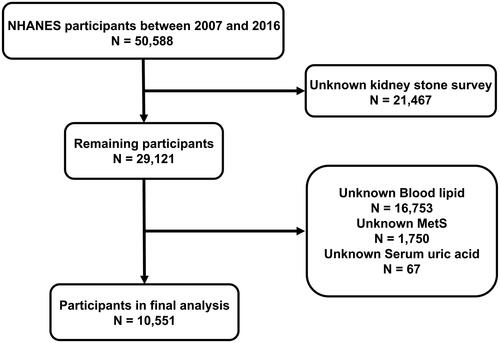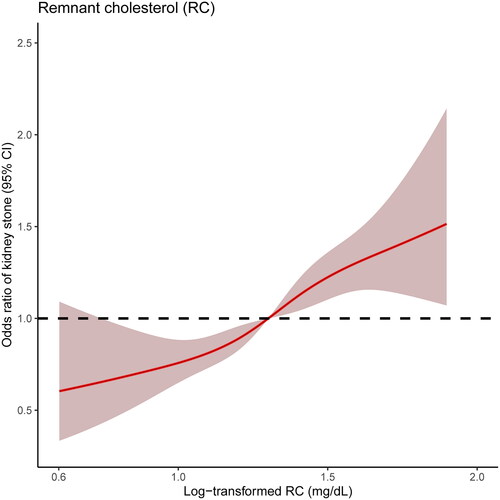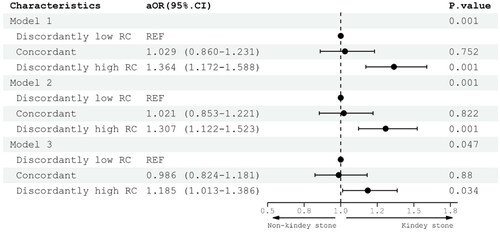Figures & data
Figure 1. Flow diagram of the inclusion and exclusion criteria from National Health and Nutrition Examination Survey (NHANES) 2007–2016.

Table 1. Baseline characteristics of NHANES participants between 2007 and 2016 (n = 12117).a
Table 2. Characteristics of the study population in concordant and discordant groups–remnant cholesterol vs. low-density lipoprotein cholesterol.a
Figure 2. The dose–response analysis between log-transformed remnant cholesterol (RC) levels and risk of kidney stone in the weighted population. The upper and lower limits of the 95% CI are shaded.

Table 3. Logistic models (95% confidence intervals) of kidney stone events for log-transformed RS levels in NHANES participants between 2007 and 2016.a
Figure 3. Association of different categories of remnant cholesterol (RC) with kidney stones. Model 1: adjusted basic information for age, gender, race, marital status and education. Model 2: model 1 further adjusted lifestyle factors for moderate recreational activities and BMI. Model 3: model 2 further adjusted high risk factors for kidney stone formation for hypertension, diabetes, apolipoprotein B, blood urea nitrogen, serum uric acid and serum creatinine.

Table 4. Logistic models (95% confidence intervals) of kidney stone events for remnant cholesterol in NHANES participants between 2007 and 2016.a
Table 5. Subgroup analysis of kidney stone events for standardized remnant cholesterol concordant and discordant groups in NHANES participants between 2007 and 2016.a
Supplemental Material
Download Zip (254.2 KB)Data availability statement
The datasets generated for this study are available on request to the corresponding author.

